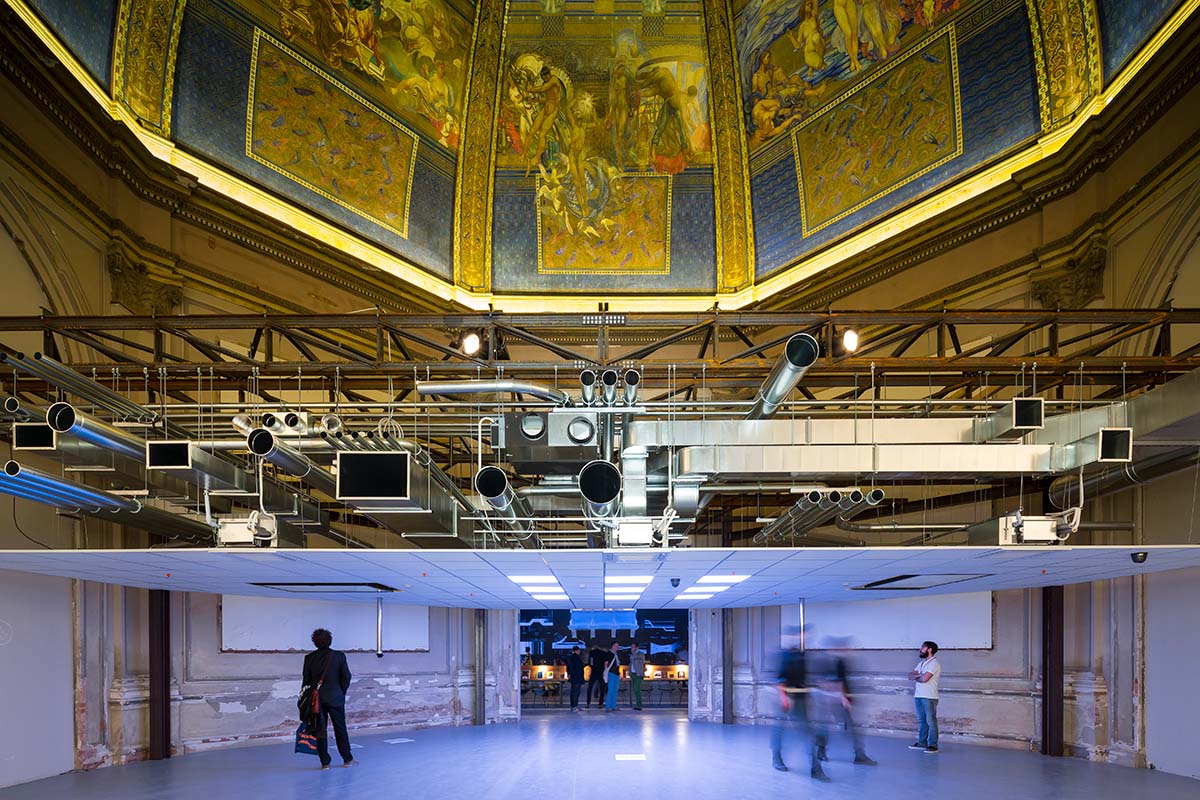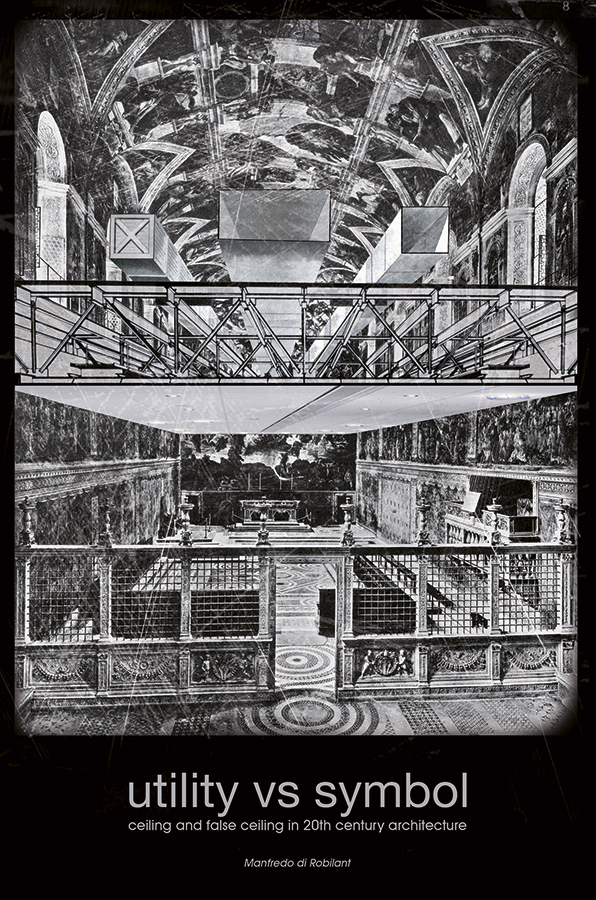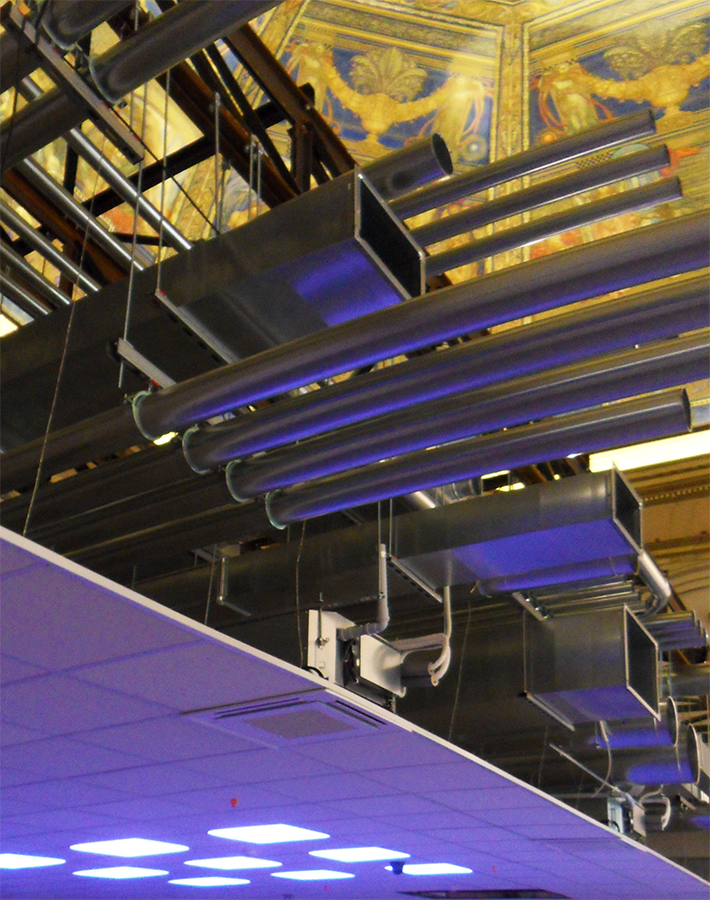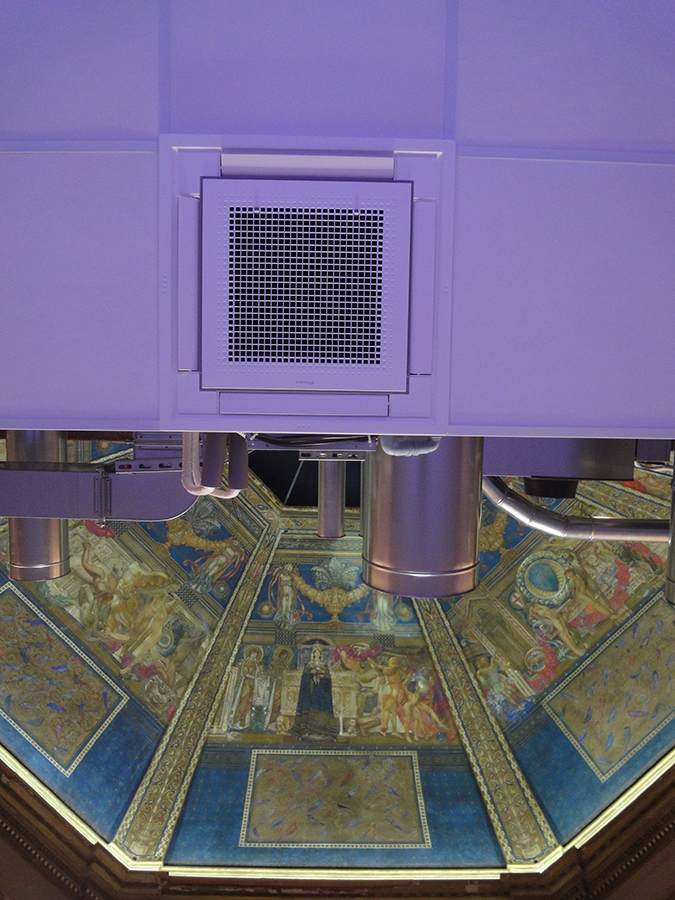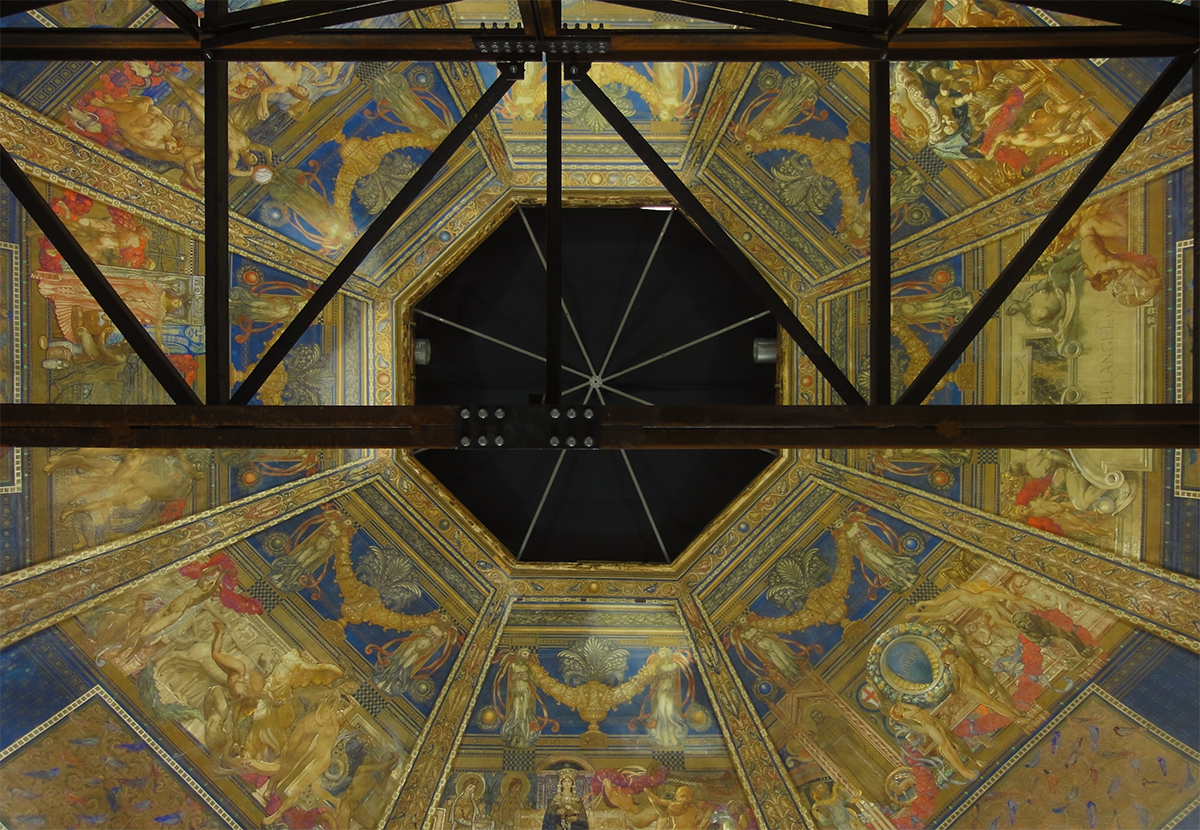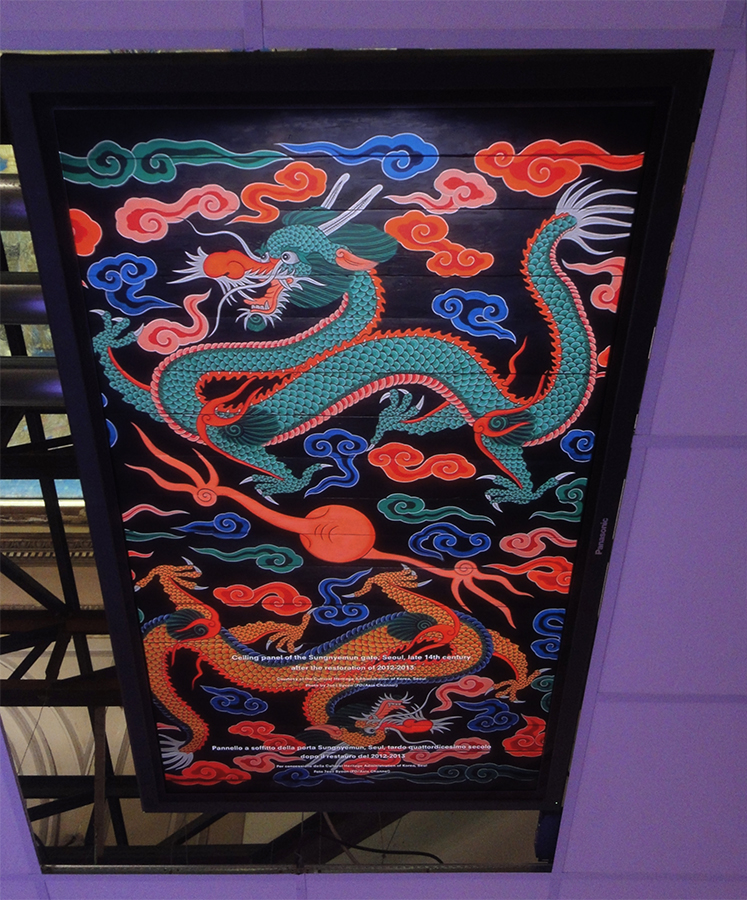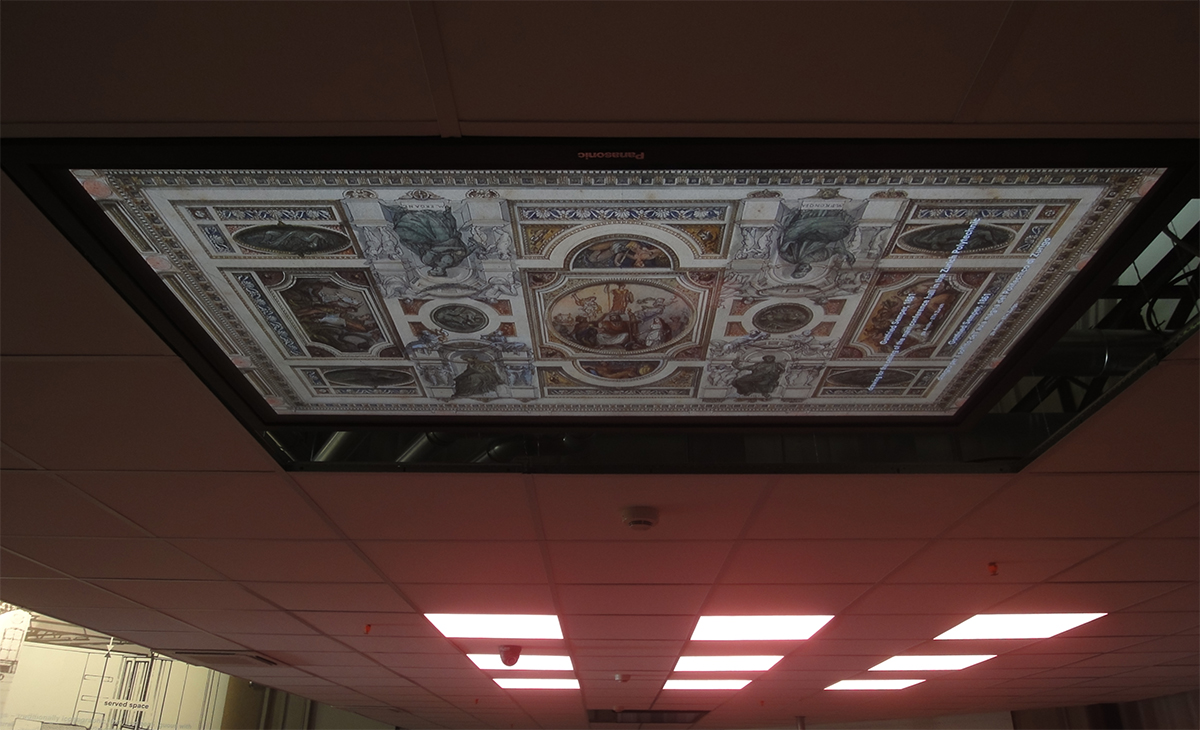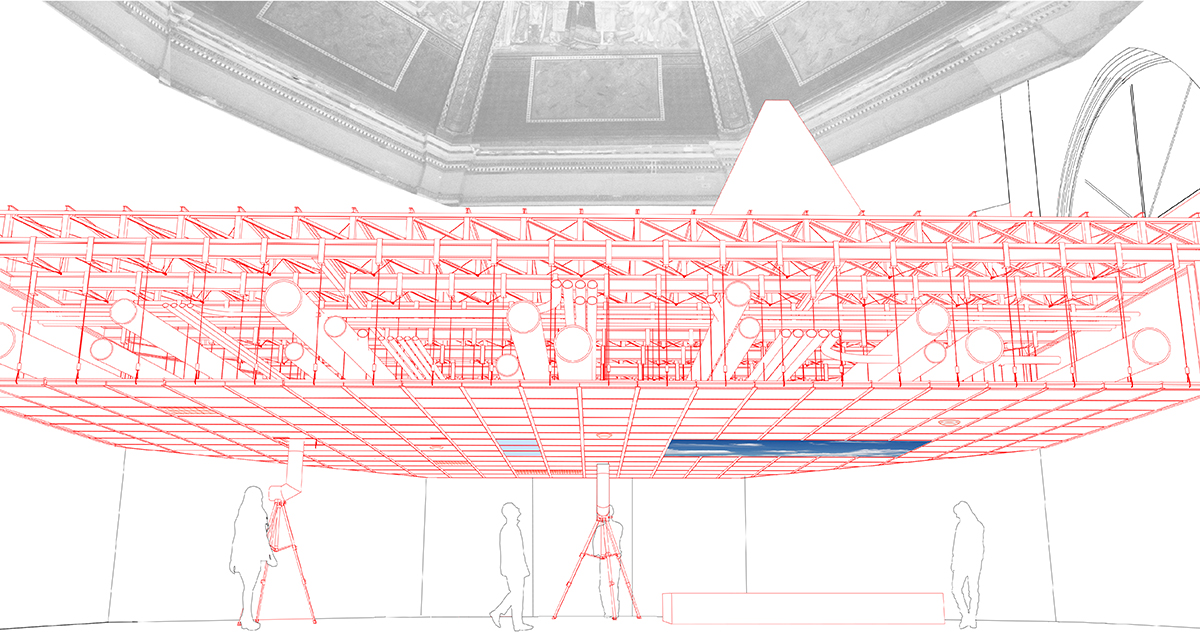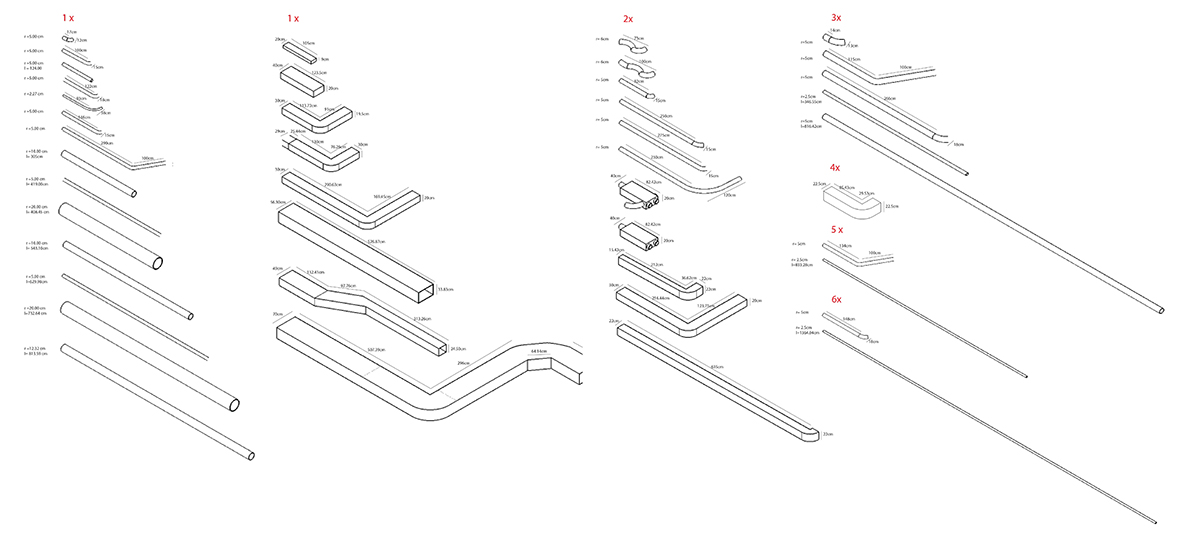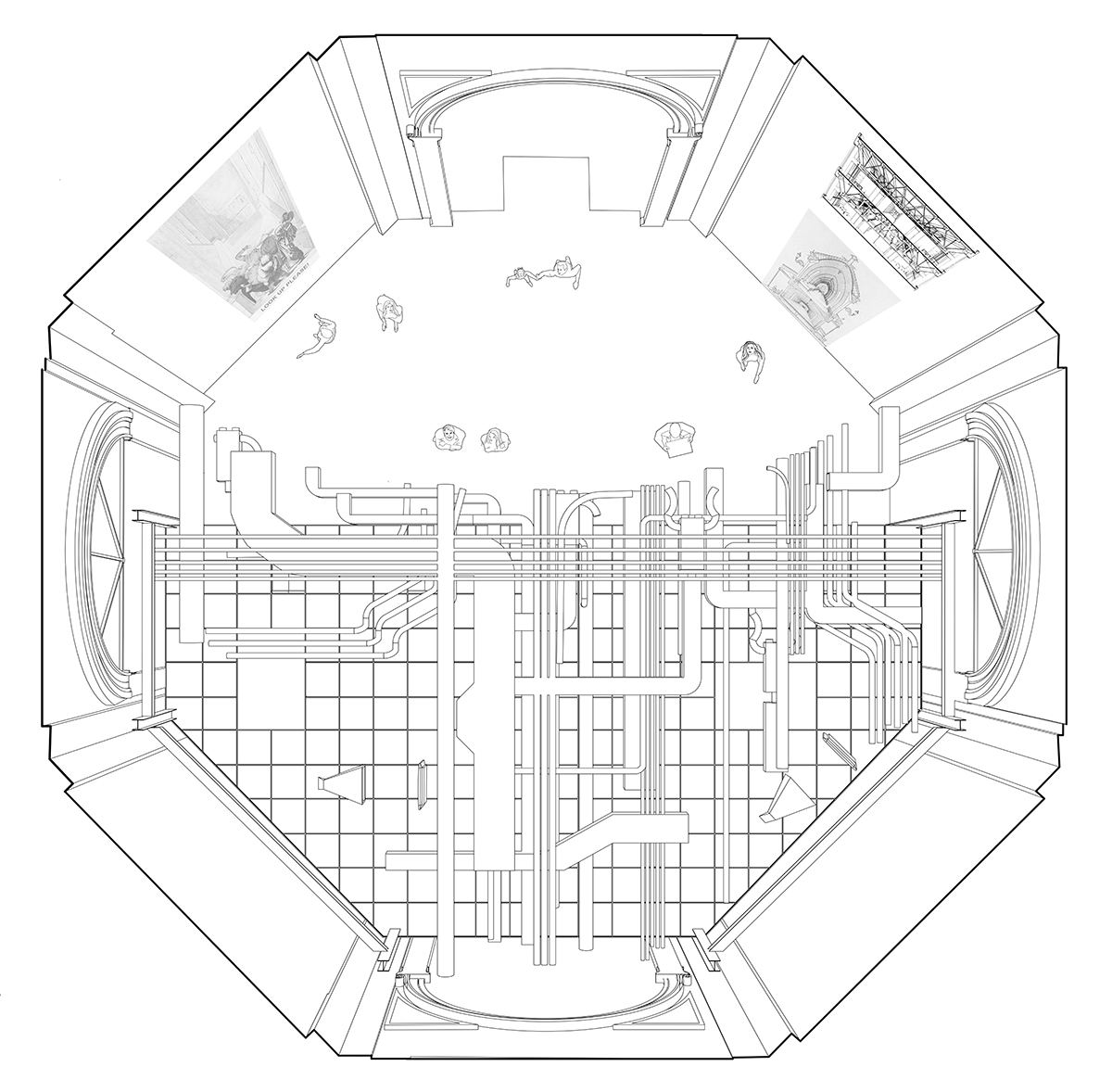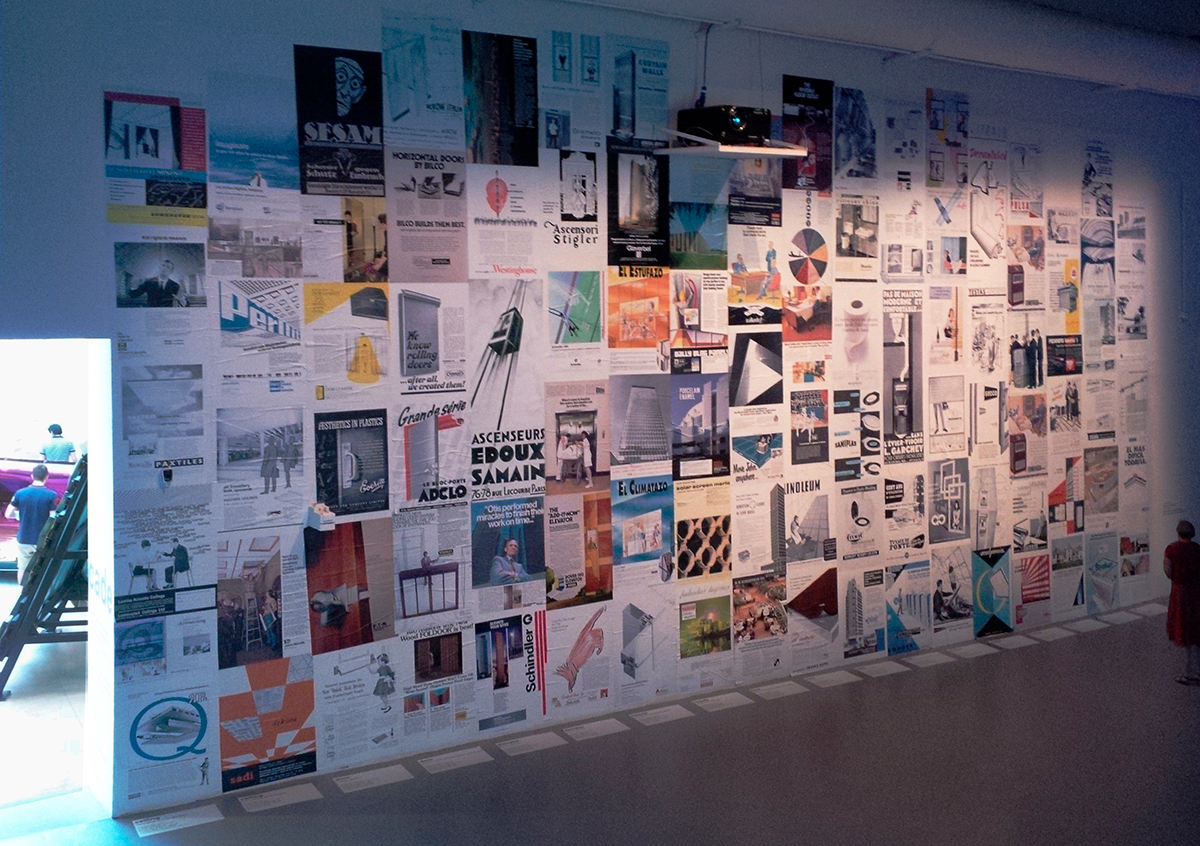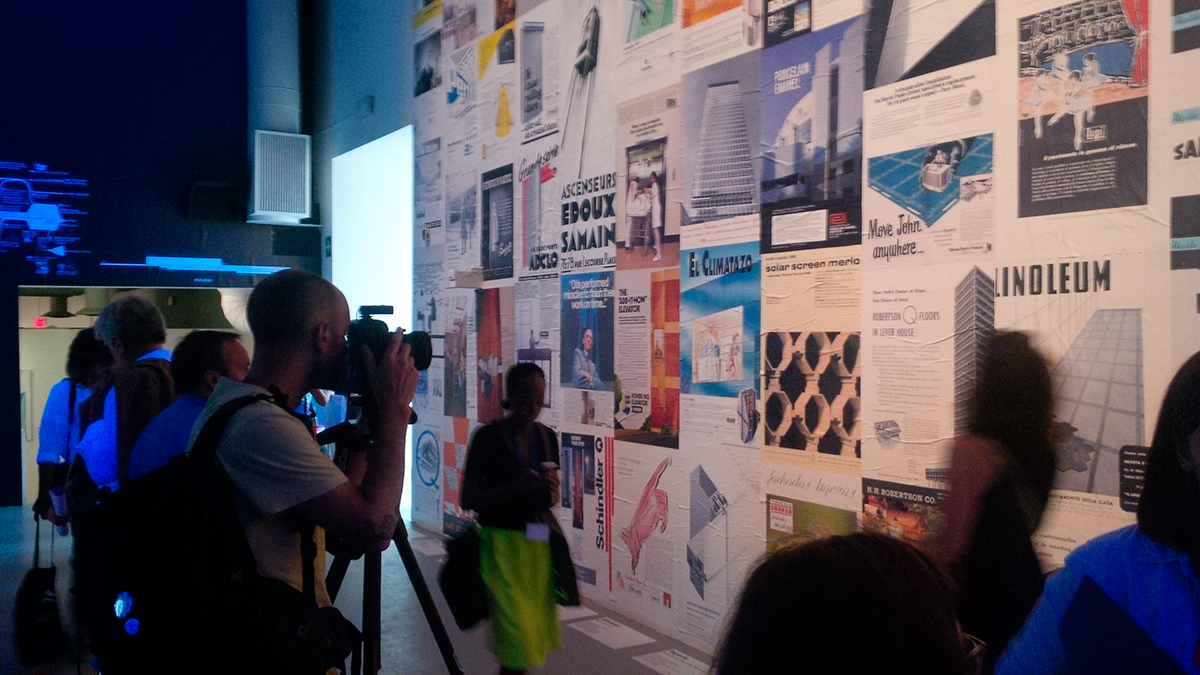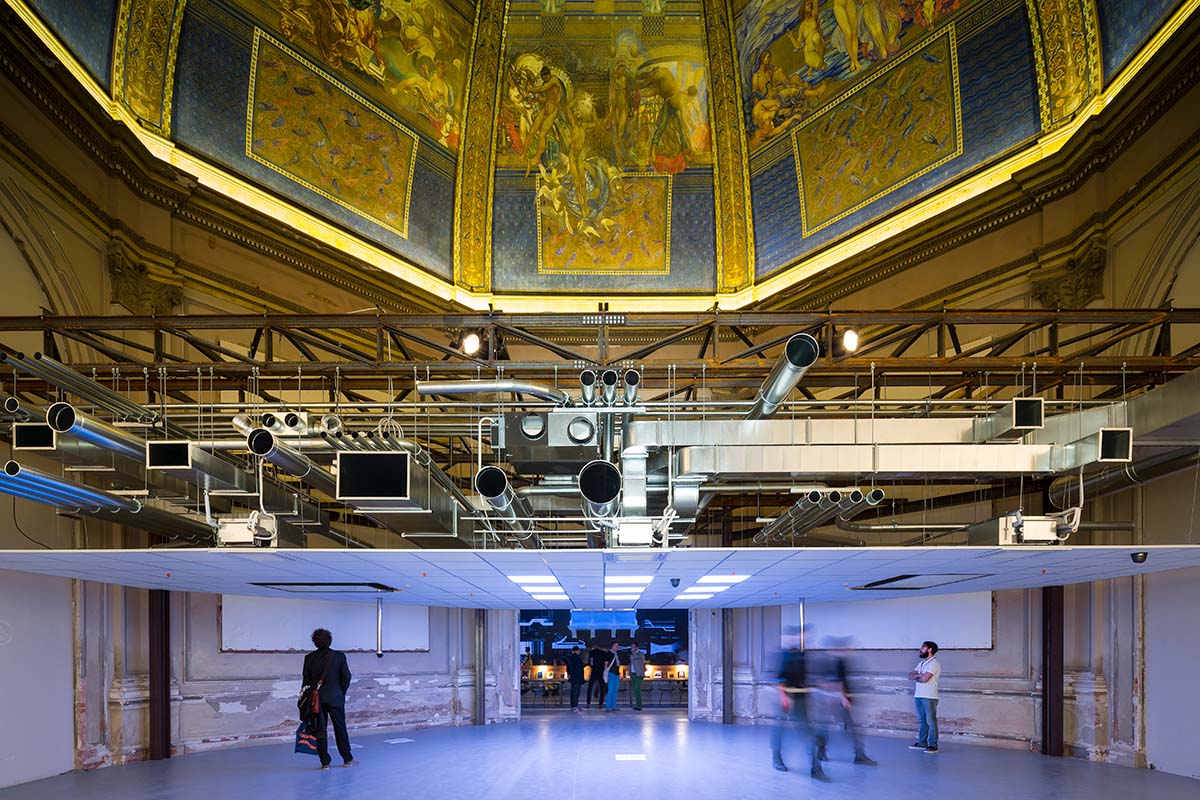The installation was located in the first room of the Biennale Central Pavilion, where the exhibition elements of architecture was on stage. The installation aimed at highlighting one of the key features of the exhibition: the relationship (often in fact the conflict) between utilitarian needs and symbolical ambitions in architecture. The installation functioned indeed as the introductory “drama” of the exhibition, as noted by Cynthia Davidson in her report on the journal LOG.
Under half of the 14 meters high dome frescoed by Galileo Chini in 1909, and featuring the history of art from the primitive age to the modern age, a new sandwich ceiling of 2,30 meters was installed, on a metal structure, hosting all the entrails (i.e. the systems) that usually modern ceilings host and hide.
Physically the opposition was hence between high and low, conceptually between the merely symbolical and the merely utilitarian. This opposition was already the theme of the 2012 poster of a research project by Manfredo d Robilant, titled Utility vs Symbol and devoted to the history of the ceiling in the modern age.
Physically the opposition was hence between high and low, conceptually between the merely symbolical and the merely utilitarian. This opposition was already the theme of the 2012 poster of a research project by Manfredo d Robilant, titled Utility vs Symbol and devoted to the history of the ceiling in the modern age.
Venice, 2014
Client: La Biennale di Venezia
Manfredo di Robilant (and Rem Koolhaas/AMO)
Structures: IPEprogetti Sr
